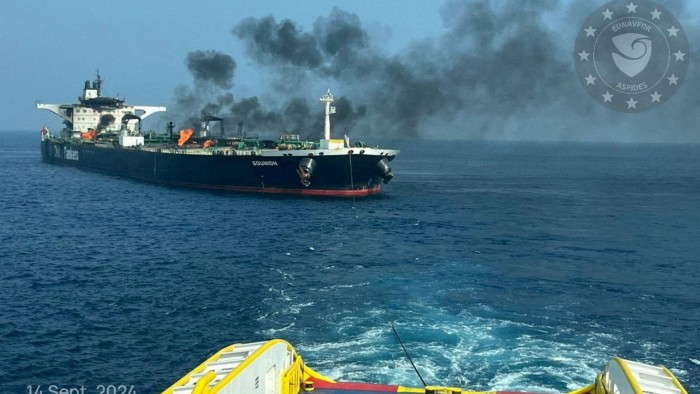Unlock the White House Watch newsletter for free
Your guide to what the 2024 US election means for Washington and the world
US President Donald Trump’s proposal to take over Gaza has hit hopes of a return to the Red Sea route after more than a year of disruption, according to shipping executives.
Trump’s shock announcement this week has raised fears that Yemen’s Houthi militant group could renew its threat against commercial ships crossing the Red Sea, after declaring last month that it would stop targeting most vessels following the Israel-Hamas ceasefire.
Jan Rindbo, chief executive of commodities shipping group Norden, said Trump’s plan added “to this picture of turmoil and tension in the Middle East and that could prolong the Red Sea issue”. The announcement increased “the risk that the Houthis are not just going to sit tight,” he added.
Trump’s Gaza proposal exacerbated the uncertainty his unpredictable approach is creating for trade and the shipping industry. In his first days in office, the president’s tariff threats on several trading partners reignited fears of trade wars and global economic decline that could hit shipowners’ earnings.
The Houthis’ announcement on January 19 that they would lift sanctions on ships, except those registered in Israel or wholly owned by Israeli entities, has been followed by a slight increase in shipments past Yemen. Since launching their campaign in late 2023 in support of Gaza’s Palestinians, the Houthis have threatened all ships heading to Israeli ports, as well as those owned by UK and US entities.
The number of transits through the Bab-el-Mandeb strait that enters the Red Sea past Yemen rose 4 per cent to 223 in the week following the Houthis’ announcement, according to Lloyd’s List Intelligence. Of these ships, about 25 had avoided the area since 2023 or had not historically sailed through the strait, it said.
One liquefied natural gas carrier that recently left Oman is set to transport the first non-Russian LNG cargo across the Red Sea in more than a year, according to commodities data firm ICIS. The Salalah LNG is signalling for a Turkish port with an estimated arrival of February 16, suggesting it would have to take the Red Sea route to arrive on time.
Bridget Diakun, maritime risk analyst at Lloyd’s List Intelligence, said that while “a small number of vessels are returning”, others were still “waiting for proof of stability”.
But more shipowners were now bracing for an escalation in Middle East tensions and for the Houthis to backtrack on their promise to limit attacks, said executives.
Lars Jensen, CEO of Vespucci Maritime, which provides advisory services to shipowners and traders, said early hopes of a return to passage through the Red Sea had been dashed.
“A week ago there was a light at the end of tunnel,” said Jensen. But now “the likelihood of a return to the Red Sea is reduced”.
Rindbo said transits could pick up after about two months of peace in the Red Sea, but Trump’s declaration did not “really help instil that confidence that this is a region that is stable”. Leaders across the Middle East have attacked Trump’s proposal.
Traders have been itching for a return to normal following the disruption that for more than a year has increased shipping times and costs as vessels travelling between Europe and Asia took the longer route around Africa.
Danish container shipping group AP Møller-Maersk forecast this week that trading through the Red Sea would at best open up by the middle of 2025 and at worst would remain restricted until the end of the year. The former would leave the Danish container shipping giant probably breaking even this year, but the latter could see it make about $3bn of operating profit.
“Going back through Suez is such a complex process that we have to make sure we don’t go back for just a few months. Customers don’t want a flip-flop,” chief executive Vincent Clerc told the Financial Times.
Maersk previously attempted a return to the Red Sea in December 2023, but the Houthis almost immediately fired on and attempted to board one of its vessels, prompting the company to reroute shipments again.
“As long as there is doubt about how things will look a few weeks down the road, we will wait,” said Clerc.







